OpenBCI + cEEGrids
16.03.2021 – Heidelberg, Germany
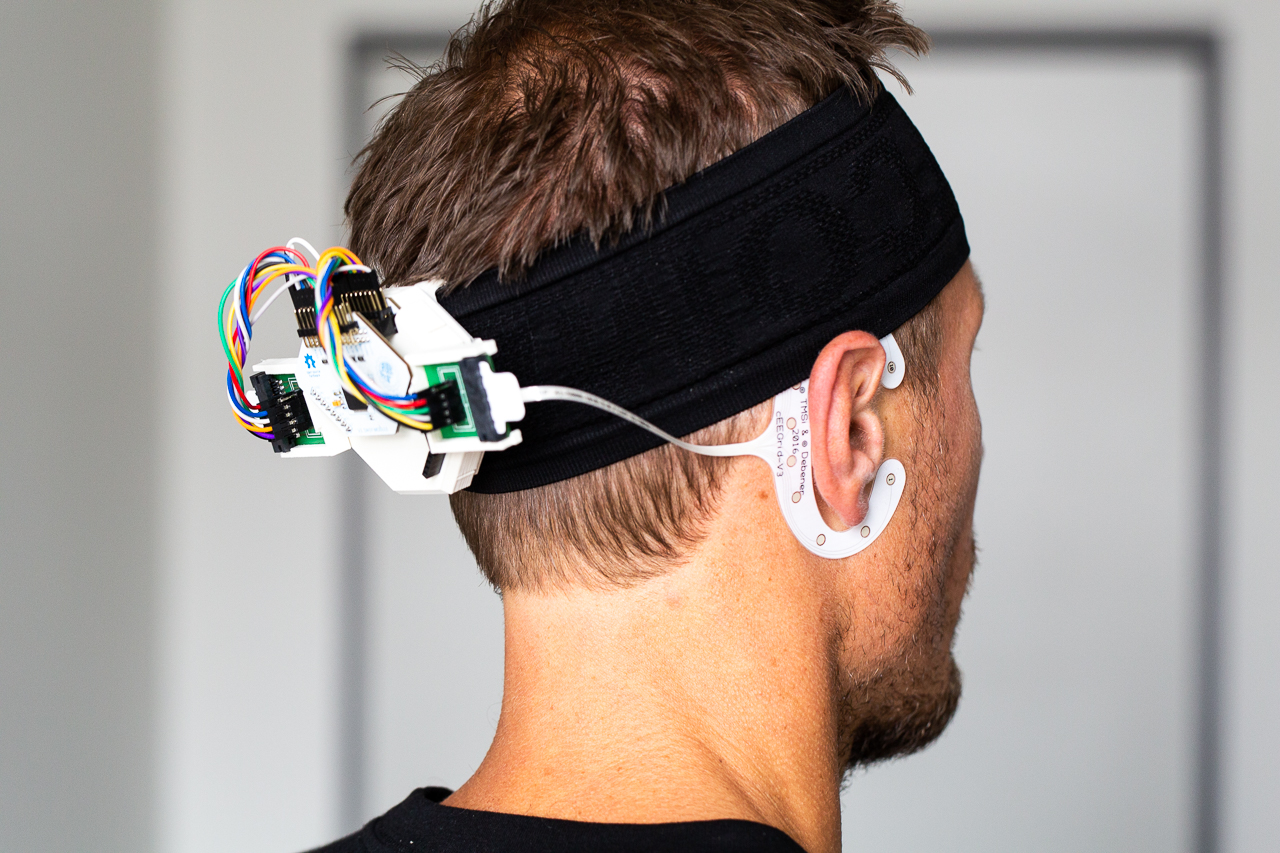
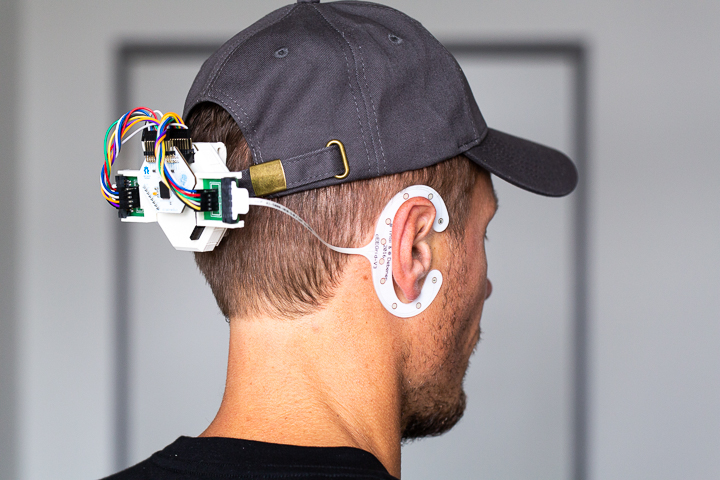
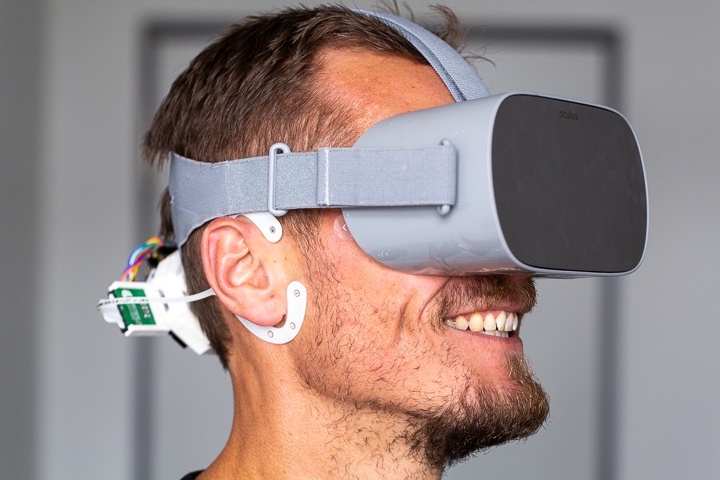
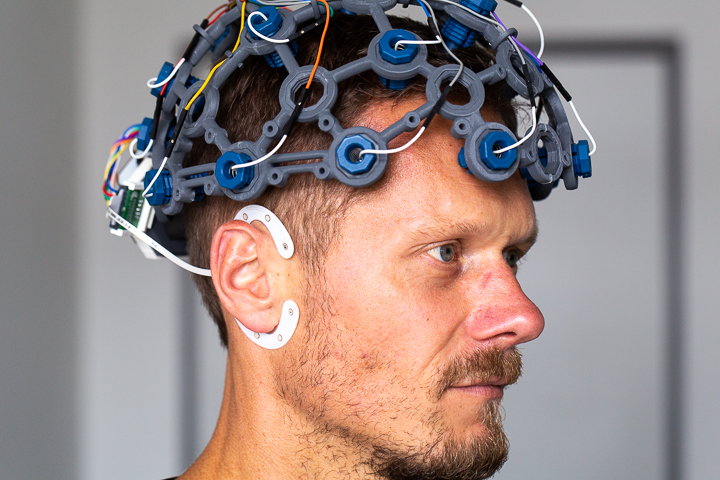
tl;dr
Long story short: We present a simple design solution to integrate the so-called cEEGrid sensors with the OpenBCI Cyton (+Daisy). The cEEGrids are a flexible, re-usable and convenient around-the-ear electrode array that capture EEG and other physiological phenomena. A technical evaluation is provided here. You can assemble the system by yourself with a 3D-Printer (or 3D-printing service) and a soldering iron. You can find a list of the required materials and assembly instructions here. If you would like to learn about why and how we did it - keep on reading!
Go with the Flow
This was one of the things that you just kind of stumble on to. For the past few years, we (Pierluigi, Christoph and Michael) have been conducting research on the flow experience. The flow experience is that feeling of complete task absorption where you are shut off from the outside world. Everything (i.e. your thoughts and actions) seems to happen automatically and with perfect precision [1].
Flow is not only linked to superior performance but also to personal growth and feelings of great satisfaction and reward [1, 2]. Naturally, it would seem like a good idea to make sure that one experiences flow more often in life. As it turns out, though, this is not so easy to achieve. And there are no easy tools around as there are no real-time measures of flow available yet. Such measures would be needed to create BCIs that can provide feedback for flow-self-regulation or that adapt systems to facilitate flow experiences. In recent years, scholars from various disciplines have started to research how flow experiences could be detected by directly observing brain activity [3]. Their shared understanding is that an experience as unique as flow should have a unique underlying neural configuration. Thus, research in BCI-based flow facilitation is growing [4].
One exciting finding emerged recently. In ours and other studies, EEG activity at temporal brain sites has repeatedly been found to be related to flow. It is not yet clear if these observations describe flow more in terms of moderate mental workload [4] or perhaps a reduction of verbal-analytic interference with behaviour execution (i.e. an inner monologue that interferes with your task actions might be reduced - see [5, 6, 7]). It will be interesting to see what will emerge with further research. However, a central problem with this research is that it is still often confined to laboratory settings with artificial tasks [4]. In contrast, it would be much better to observe flow as it is occurring naturally. “If only, it were a bit easier to do whole-day EEG research in the field, without extensive discomfort or intrusion into people’s lives…” - is what we thought and pondered the world of Google Scholar. Catalyzed by increased reading time due to social distancing, we stumbled upon something promising: a novel EEG sensor that can be worn comfortably throughout the day [8, 9] - and that captures neural activity particularly from temporal sites [10]?! Colour us intrigued…
Into the Field - cEEGrids
A bit more reading later, we learned that the cEEGrids are described as a “flexible printed Ag/AgCl electrodes system consisting of ten electrodes arranged in a c-shape to fit around the ear” [8]. The sensors have been repeatedly reported to enable high-quality and multiple hour EEG recordings [8, 11, 12, 13] due to the possibility of using the cEEGrids with a small amount of gel. However, as the electrodes are simply placed around the ear, no hair-washing is required [8]. That was the point when we ordered some of the electrodes from TMSI - you know, just to see how it goes when we stick them on some people (our patient colleagues, friends and partners, of course).
The electrodes' application around the ear is realized in a few minutes (including light cleaning of the skin with alcohol or an abrasive gel), and they can be re-used numerous times after cleaning the gel residue and re-applying a double-sided adhesive [8]. So far, the cEEGrids have demonstrated their ability to record typical EEG phenomena related to visual stimulation (posterior Alpha increases with reduced visual information - see [8]), to auditory stimulation (detection of directed speaker attention – see [12, 14, 15, 16]), sleep stage detection [9, 17, 18] and changes in mental workload in driving simulations with older adults [19]. While the system posits numerous advantages, some challenges limit its acceptance and access. Importantly we wondered, how can we use these cool new electrodes without having to spend a bazillion on a specialised amplifier? Wait - did we not recently buy one of these (even cooler) OpenBCI systems? Thus began the journey into the design process…
Development Stage 1 - Proof of Concept
Since none of us had ever undertaken such a project, we deemed it a good idea to gather some expert knowledge. First of all, because while it was suggested in the literature that the cEEGrids can be used with various amplifiers [8], more research from the same team also indicated that it is not a sure thing that they will work with just any amplifier (e.g. sufficient sensitivity to the small signal amplitudes that are measurable with cEEGrids is needed - [10]).
Two email inquiries later with very friendly and constructive feedback by both the cEEGrid and OpenBCI developers, we learned that at least no problems should arise when amplifiers without active shielding are used with the cEEGrids. The Cyton/Daisy amplifier includes noise reduction thanks to the ADS1299. It is still considered a passive system, however. Thus it seemed we were on the right track and that the potential for using the cEEGrids with the OpenBCI platform was generally there. Following the component cEEGrid connector instructions we assembled a first connector by soldering on the mini edge card socket and some regular jumper cables on to the connector PCB. The idea was quite simple: get a functioning prototype ready to collect some data without making it fancy yet. But, to not make it all look dangerous and leave soldered connections uncovered, a small enclosure for the cEEGrid connector was 3D-printed. Also, as the system should be worn somewhere close to the ears, a collar-mount through a clip attached to the OpenBCI Cyton board mount’s underside was realized. To complete this design, we even tried printing a few cable mantle segments with a flexible filament.
As you can see from the pictures below, many things about this design did not work well. The connectors were dangling around mid-air, which could only be solved quickly by adding some tape on the neck. The whole thing was huge and messy, with long cable paths and excessive cables hanging around that weren’t even being used. Who would not want to wear this sexy and convenient system?
But you know what? At least it did work! It actually seemed like we could collect valid EEG data. How did we know? Well, typical recording “artefacts” like eye-movements, blinks, jaw activity, etc. were all there - visible in the OpenBCI GUI. Full disclosure: there were a few initial recording problems (RAILED electrodes and 50Hz spikes). These were caused either by poor electrode-skin contact, which was alleviated using just a bit of additional gel and by turning off signal-contaminating electronics (it turns out that my standing desk is not shielded that well…).

Ok, that was proof of concept. Now all that was left was to create a simple design to integrate and stabilise the whole thing. Famous last words, right?
Development Stage 2 - Integrated Design
So, what were our main goals here for this second stage? First, we thought it would be good to keep the system small, flexible and integrated with the existing OpenBCI components. Thereby it should be possible to use one’s OpenBCI system with minor alterations to include the cEEGrid electrodes. Also, it should be possible to switch between electrodes flexibly. The latter was important for two reasons. First, not all of the 20 cEEGrid electrodes can be used with the 18 Cyton+Daisy pins. Second, what if someone wants to combine the cEEGrids with other electrodes (e.g. on the head or the body)? The solution then appeared rather simple: The OpenBCI uses stack headers - so why shouldn’t this component too? Requirement 1 - check! Now, how could we deal with the bulky system, dangling connectors and long cables? Well, the idea was to make a removable container that the cEEGrid connector can be clipped on, and that itself can be attached to the Cyton board mount (that only needed two little cut-outs on the top). That seemed doable. Only about 68 versions and prints later, the final solution was produced. Requirement 2 - also check!
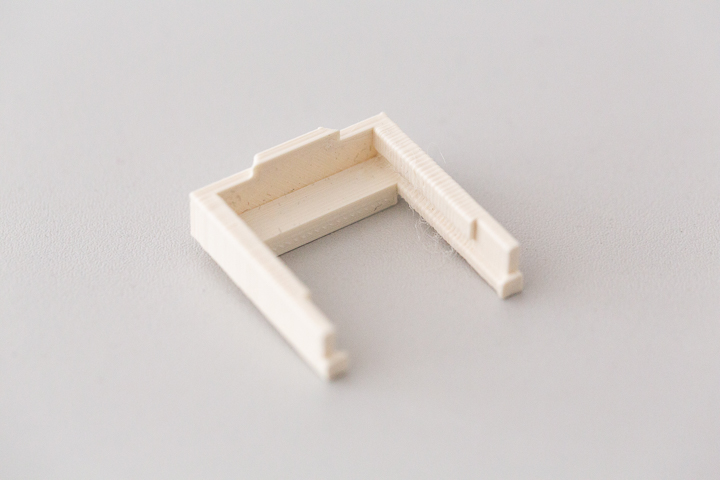
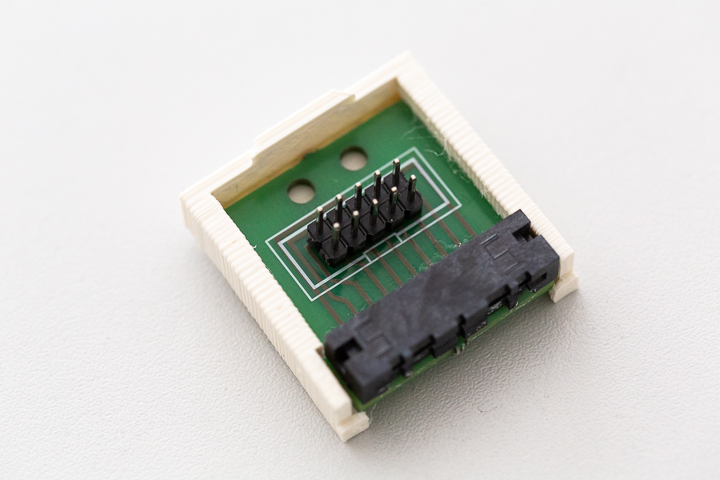
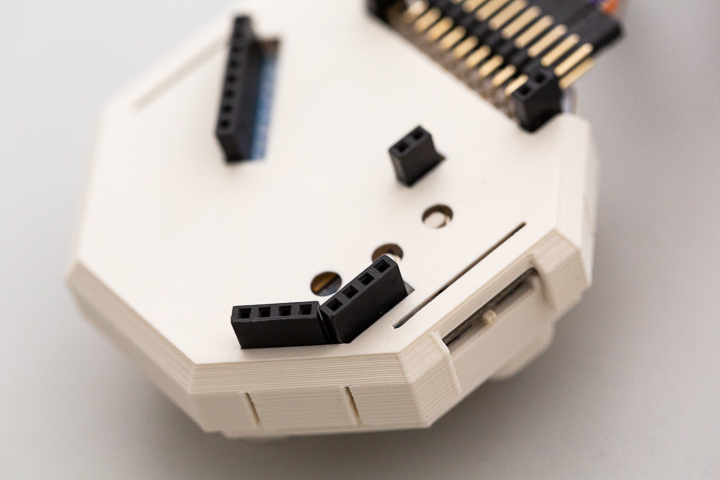
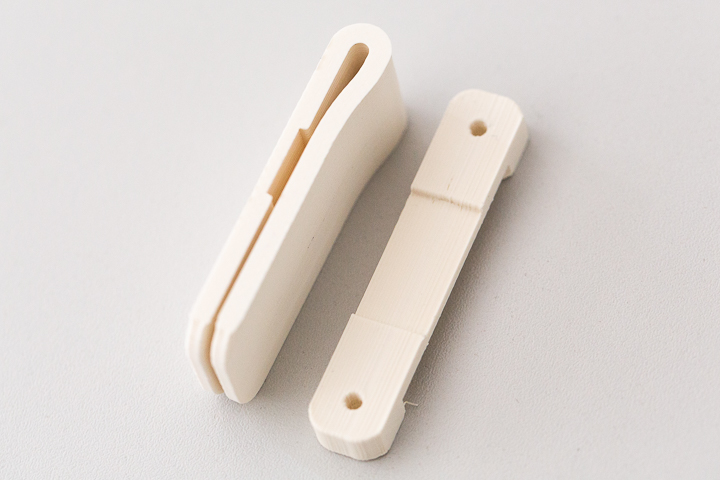
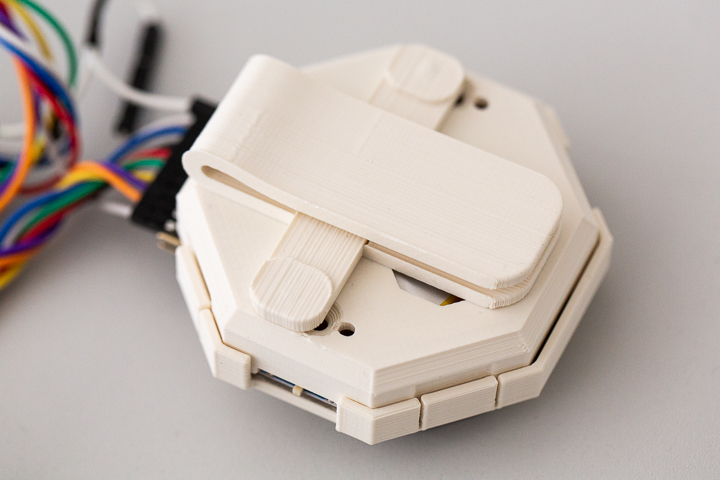
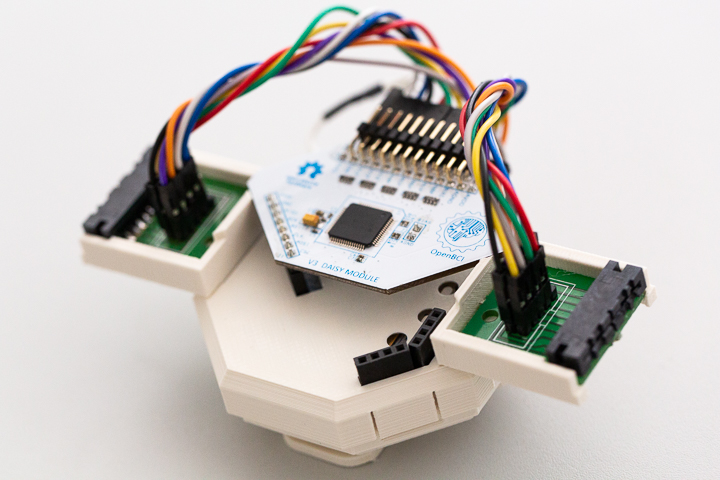
Altogether, this design offers flexibility (to use different electrodes combinations, using the OpenBCI boards with or without cEEGrids with the same components), robustness (no dangling components that cause mechanical artefacts) and various applications through clipping it on to some kind of head-gear (think headbands, baseball caps, even VR googles or the Ultracortex MK IV).




To complete the integration and design process we eventually ended up compiling a technical evaluation study (currently under revision but available here). Importantly, this study also includes assembly instructions and a bill of materials. So if you would like to replicate the system take a look at the Appendix in that article.
Takeaway
Of course, we might be biased, but we think the combination of cEEGrids and OpenBCI boards is a pretty cool thing for the advancement of wearable BCI. There is plenty of exciting stuff that can be researched and developed here. We will be focusing a bit on flow experiences, but perhaps you have other cool ideas? Well, if you do and you would perhaps like to work with us on them, give us a quick shout-out. We believe that collaboration is awesome, which is why we share our development experience here. Again, since this is the first time we have done something like this, there are probably quite a few things that could be improved. Do let us know about them too!
Project Metadata
Links
- Materials and Assembly Instructions: https://github.com/MKnierim/openbci-ceegrids
- Evaluation Study: https://arxiv.org/abs/2102.00414
Contributors
- Michael T. Knierim
- Christoph Berger
- Pierluigi Reali
References
- Csikszentmihalyi, M.: Beyond boredom and anxiety. Jossey-Bass, San Francisco (2000).
- Tse, D.C.K., Nakamura, J., Csikszentmihalyi, M.: Living well by flowing well: The indirect effect of autotelic personality on well-being through flow experience. J. Posit. Psychol. 1–12 (2020).
- Harris, D.J., Vine, S.J., Wilson, M.R.: Neurocognitive mechanisms of the flow state. Prog. Brain Res. 237, 221–243 (2017).
- Knierim, M. T.: Detecting Flow Experiences in Cognitive Tasks - A Neurophysiological Approach. Doctoral Dissertation. Karlsruhe Institute of Technology. (2020).
- Kramer, D.: Predictions of performance by EEG and skin conductance. Indiana Undergrad. J. Cogn. Sci. 2, 3–13 (2007).
- Wolf, S., Brölz, E., Keune, P.M., Wesa, B., Hautzinger, M., Birbaumer, N., Strehl, U.: Motor skill failure or flow-experience? Functional brain asymmetry and brain connectivity in elite and amateur table tennis players. Biol. Psychol. 105, 95–105 (2015).
- Shehata, M., Cheng, M., Leung, A., Tsuchiya, N., Wu, D.-A., Tseng, C., Nakauchi, S., Shimojo, S.: Team flow is a unique brain state associated with enhanced information integration and neural synchrony. bioRxiv. 2020.06.17.157990 (2020).
- Debener, S., Emkes, R., De Vos, M., Bleichner, M.: Unobtrusive ambulatory EEG using a smartphone and flexible printed electrodes around the ear. Sci. Rep. 5, 1–11 (2015).
- Bleichner, M.G., Debener, S.: Concealed, Unobtrusive Ear-Centered EEG Acquisition: cEEGrids for Transparent EEG. Front. Hum. Neurosci. 11, 1–14 (2017).
- Meiser, A., Tadel, F., Debener, S., Bleichner, M.G.: The Sensitivity of Ear-EEG: Evaluating the Source-Sensor Relationship Using Forward Modeling. Brain Topogr. 1–12 (2020).
- Bleichner, M.G., Kidmose, P., Voix, J.: Ear-Centered Sensing: From Sensing Principles to Research and Clinical Devices. Front. Neurosci. 13, (2019).
- Mirkovic, B., Bleichner, M.G., Vos, M. De, Debener, S.: Target Speaker Detection with Concealed EEG Around the Ear. Front. Neurosci. 10, 1–11 (2016).
- Pacharra, M., Debener, S., Wascher, E.: Concealed around-the-ear EEG captures cognitive processing in a visual simon task. Front. Hum. Neurosci. 11, 1–11 (2017).
- Garrett, M., Debener, S., Verhulst, S.: Acquisition of subcortical auditory potentials with around-the-ear ceegrid technology in normal and hearing impaired listeners. Front. Neurosci. 13, 1–15 (2019).
- Jaeger, M., Mirkovic, B., Bleichner, M.G., Debener, S.: Decoding the Attended Speaker From EEG Using Adaptive Evaluation Intervals Captures Fluctuations in Attentional Listening. Front. Neurosci. 14, 1–16 (2020).
- Nogueira, W., Dolhopiatenko, H., Schierholz, I., Büchner, A., Mirkovic, B., Bleichner, M.G., Debener, S.: Decoding selective attention in normal hearing listeners and bilateral cochlear implant users with concealed ear EEG. Front. Neurosci. 13, 1–15 (2019).
- Mikkelsen, K.B., Ebajemito, J.K., Bonmati-Carrion, M.A., Santhi, N., Revell, V.L., Atzori, G., della Monica, C., Debener, S., Dijk, D.J., Sterr, A., de Vos, M.: Machine-learning-derived sleep–wake staging from around-the-ear electroencephalogram outperforms manual scoring and actigraphy. J. Sleep Res. 28, (2019).
- Sterr, A., Ebajemito, J.K., Mikkelsen, K.B., Bonmati-Carrion, M.A., Santhi, N., della Monica, C., Grainger, L., Atzori, G., Revell, V., Debener, S., Dijk, D.J., DeVos, M.: Sleep EEG derived from behind-the-ear electrodes (cEEGrid) compared to standard polysomnography: A proof of concept study. Front. Hum. Neurosci. 12, 1–9 (2018).
- Wascher, E., Arnau, S., Reiser, J.E., Rudinger, G., Karthaus, M., Rinkenauer, G., Dreger, F., Getzmann, S.: Evaluating Mental Load During Realistic Driving Simulations by Means of Round the Ear Electrodes. Front. Neurosci. 13, 1–11 (2019).